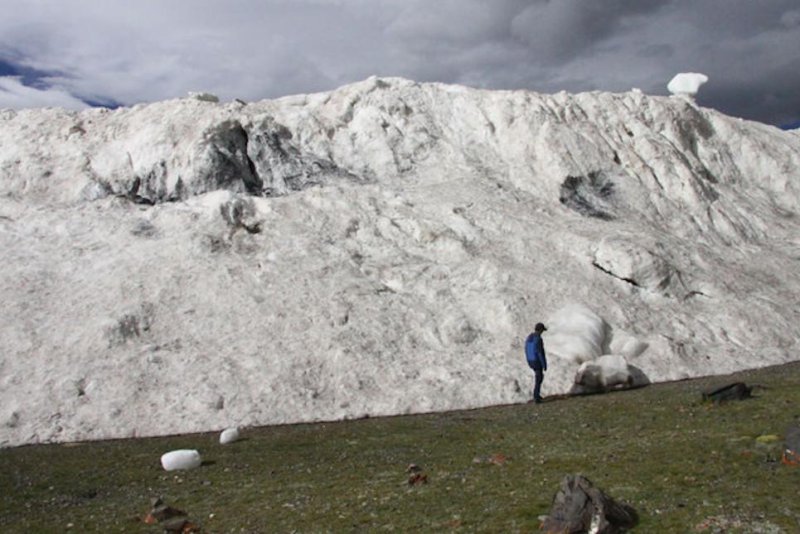More than 70 million tons of ice from the collapsed glacier slid down the mountainside and filled 3.7 square miles of the valley floor in just a few minutes. Photo by Chinese Academy of Sciences/Ohio State University.
COLUMBUS, Ohio, Dec. 9 (UPI) -- Earlier this year, 70 million tons of ice broke from a glacier in western Tibet. The massive wall of snow and ice careened down the mountainside and into a valley, killing nine nomadic yak herders. A new study in the Journal of Glaciology puts the blame on climate change.
Scientists from the Chinese Academy of Sciences and Ohio State University argue climate change is destabilizing the Tibetan Plateau, and that this destabilization ultimately triggered the avalanche.
Researchers arrived at their conclusions after conducting a forensic investigation in the aftermath of the icy slide. They surveyed the wreckage and took a variety of measurements. An on-the-ground investigation was augmented with satellite observations. Back in the lab, the scientists used their data to build a model to understand how such a massive avalanche could have happened so fast.
"Given the rate at which the event occurred and the area covered, I think it could only happen in the presence of meltwater," Lonnie Thompson, a glaciologist at Ohio State, said in a news release.
A slide triggered by meltwater was the only way to explain the avalanche in the new simulation model.
"We still don't know exactly where the meltwater came from, but given that the average temperature at the nearest weather station has risen by about 1.5 degrees Celsius, 2.7 degrees Fahrenheit, over the last 50 years, it makes sense that snow and ice are melting and the resulting water is seeping down beneath the glacier," Thompson said.
Though scientists have observed effects of climate change in southern and eastern Tibet, the glaciers of western Tibet have remained surprisingly stable over the last several decades. The avalanches experienced in the region in 2016, however, suggests glacial stability is no longer a given.















